I leave Nan extra early on a hired scooter, heading up Route 101 to Pua, then take a right onto Route 1256 at Pua. From there the ride is wild and undulating as the road leads up to Doi Phukha National Park. Except I’m not going to the park—well not yet, anyway.
Once all of this was jungle. Photo: Stuart McDonald.
Just shy of the park boundary a small sealed road runs off to the north. It tracks the ridge line and the scenery is fab. After about three kilometres I pull up at my goal for the day—the Lawa–Thai village of Ban Toei (map link).
Well Bamboo Hut* to be exact. Run by affable local man William, Bamboo Hut is famous among backpackers for trekking.
William is a pleasant enough guy and is straight down to business. I’d called the previous day and wanted to get walking today. No problem he had said, he has a two-day trek going with two Brits lined up for it already. They’re happy to wait for me if I get there early. Great news.
Too hot. Photo: Stuart McDonald.
The Brits are in their thirties, on their first trip to Thailand. How on earth did you find here? I wonder. Lost backpackers—you find them in the strangest places.
Pleasantries over, William talks us through the trek. The morning is spent hiking out of Ban Toei, then through jungle on the periphery of the park. We then enter a cave system, where we’ll spend four to five hours underground, emerging in a sinkhole. There we camp for the night, then into another cave system, out a few hours later, and then a long circle back to Ban Toei.
William is our main guide, along with two crew—one with a machete and the other a porter. Oh, and a black dog. The cave, William says, is remote. He only took seven people through it last year. The sun is shining and the skies are crystal. Time to get moving.
Too humid. Photo: Stuart McDonald.
A good trek needs a few things to come together to become great. I’ve trekked with William before so have no concerns on that count. The other travellers are the unknown.
Fifteen minutes out of the village, the complaining starts.
Anyone with kids will be familiar with the phrase, “Are we there yet?” Within an hour I’m wondering how many variations the English guy has on this phrase. I mean, at the briefing William did say four hours—what part of this is confusing to you?
We walk through harvested dry rice fields and the heat is blistering.
“It is too hot.”
The rocks are too hard to sit on. Photo: Stuart McDonald.
Later we have to cross a rickety wooden bridge—I’d have ridden a motorbike on it without a thought, but the Brits are worried. The bridge is maybe 20 metres long and we can see the river bed underneath it.
“Is it safe?”
I mean, what do you say to this? No, it’s not, if you stand on it you will die?
On we go. Patient William answers their non–stop queries. It’s good to ask questions as they can help to improve your own knowledge. But did we need to stop for five minutes to discuss where the random dude on a scooter in the distance was going?
Always remember to look up. Photo: Stuart McDonald.
We leave the fields behind and plunge into the jungle. The canopy protects us from the searing heat, but the humidity goes up a notch or ten.
“It is too humid here.”
We reach a dry river bed—the river base is large uneven rocks (“too difficult to walk on”). After an hour we break for lunch in the shadow of an outcrop that cradles a waterfall in wet season. The jungle setting is beautiful.
“Is there somewhere else to sit? The rocks are too hard.”
THEY ARE ROCKS!
We have some downtime, then continue on, back into the jungle then revert to the river bed. Another hour and we reach the moment I knew was coming and was dreading. The cave entrance.
I’ve never taken a decent stalactite photo in my life. Photo: Stuart McDonald.
It’s a sheer limestone face with a gap at the base of about 50 centimetres in height. The porter drops to his stomach, pushes his gear through ahead of him, starts wriggling in the dirt, and vanishes.
The two Brits look at one another then at William.
“No.”
Here we go.
Fifteen minutes later, William has cajoled them through the slot in the ground. On the other side a rickety wooden ladder climbs a sheer stone face, depositing us in a larger cavern. We’re standing there, in the pitch black save our torches. The cave air is far cooler than outside, a relief. Still they are moaning.
“How far is it to the exit? Is it always this dark? Will it get much colder?”
Two guides, one with two legs, one with four. Photo: Stuart McDonald.
The cave is tight in places, but William knows that now he has got them through the slot there is no going back. Step by step we follow passages, then need to climb through narrow crevices bracing against one wall. The cave system swings back and forward between large and tight tunnels. A ladder here and there. Often there is no room to stand. It is claustrophobic. The Brits ask about flooding dangers. How do we get out if we get lost?
Their moaning is incessant and gets increasingly negative in tone. At one stage the dog vanishes and we spend 20 minutes searching for her. “What if she is trapped and dies?” they ask.
The dog resurfaces from nowhere, scampering between our legs, unphased by our journey to the centre of the earth. The tunnel threads up and doubles back on itself then the air flow suddenly seems different and I feel like we’re in a larger cavern. William has us pause to catch our breath.
Like something out of Alien. Photo: Stuart McDonald.
“Turn off your lamps and be super quiet,” he says. He’s probably been wanting to say that for the last few hours I think.
How can it be darker than pitch black? I hold my hand in front of my face and can’t see it. I’m invisible. Save our laboured breathing, it is almost silent. I can hear one of the crew fiddling somewhere out of reach, and then he turns on an extra bright light.
We all lose our breath.
We’re in a large cavern, roof pierced by stalactite, the walls embedded with a million dancing diamonds. We stand, mesmerised, soaking it up, then it is big light off and we continue.
In the tunnels I have no sensation of direction. Up or down, left or right. It is beyond disorientating. Then, in the distance, there is the slightest murmuring of light and life.
Oh salvation! Photo: Stuart McDonald.
We round a bend and the tunnel widens. A steep incline curls to a glowing emerald green half crescent. The two Brits almost levitate to the light, but it is a tricky climb, taking us 20 minutes to escape.
We’re at the sinkhole. I feel like I’m on the set of Jurassic Park. William explains that millions of years ago this was a part of the cave system we just left, then the roof collapsed. Since then a jungle has grown.
We’re in the land the world forgot.
One of the crew starts to set up camp—a tarp on the dirt and a tarp tied to trees overhead. The other is over fiddling in the trees.
Out of the cave, into the sinkhole. Photo: Stuart McDonald.
I walk over and ask him what he is doing.
“Setting traps for breakfast,” he says. “I want to catch some rats.”
Don’t tell the Brits, I think.
More tomorrow.
*Bamboo Huts permanently closed years ago.




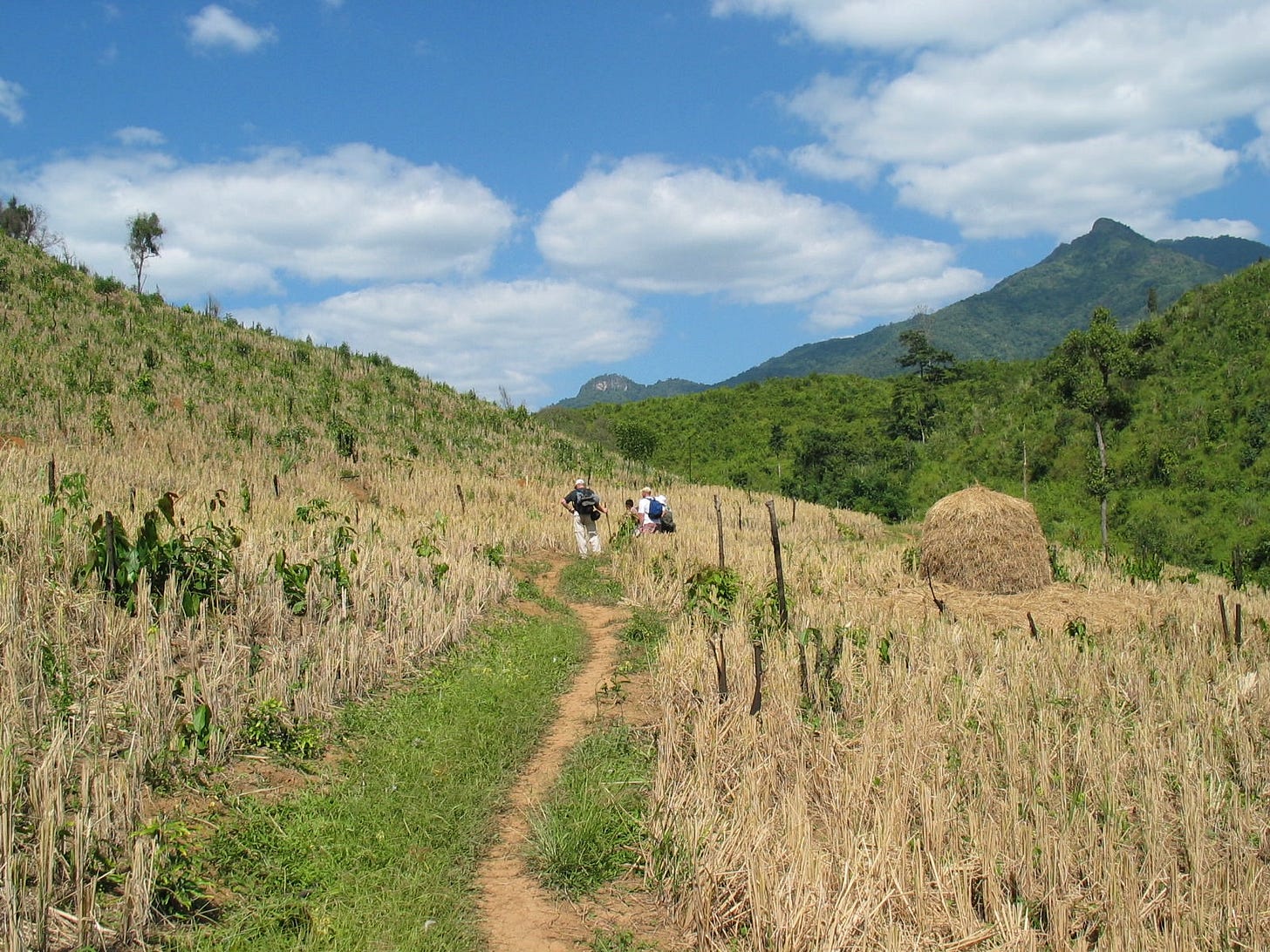
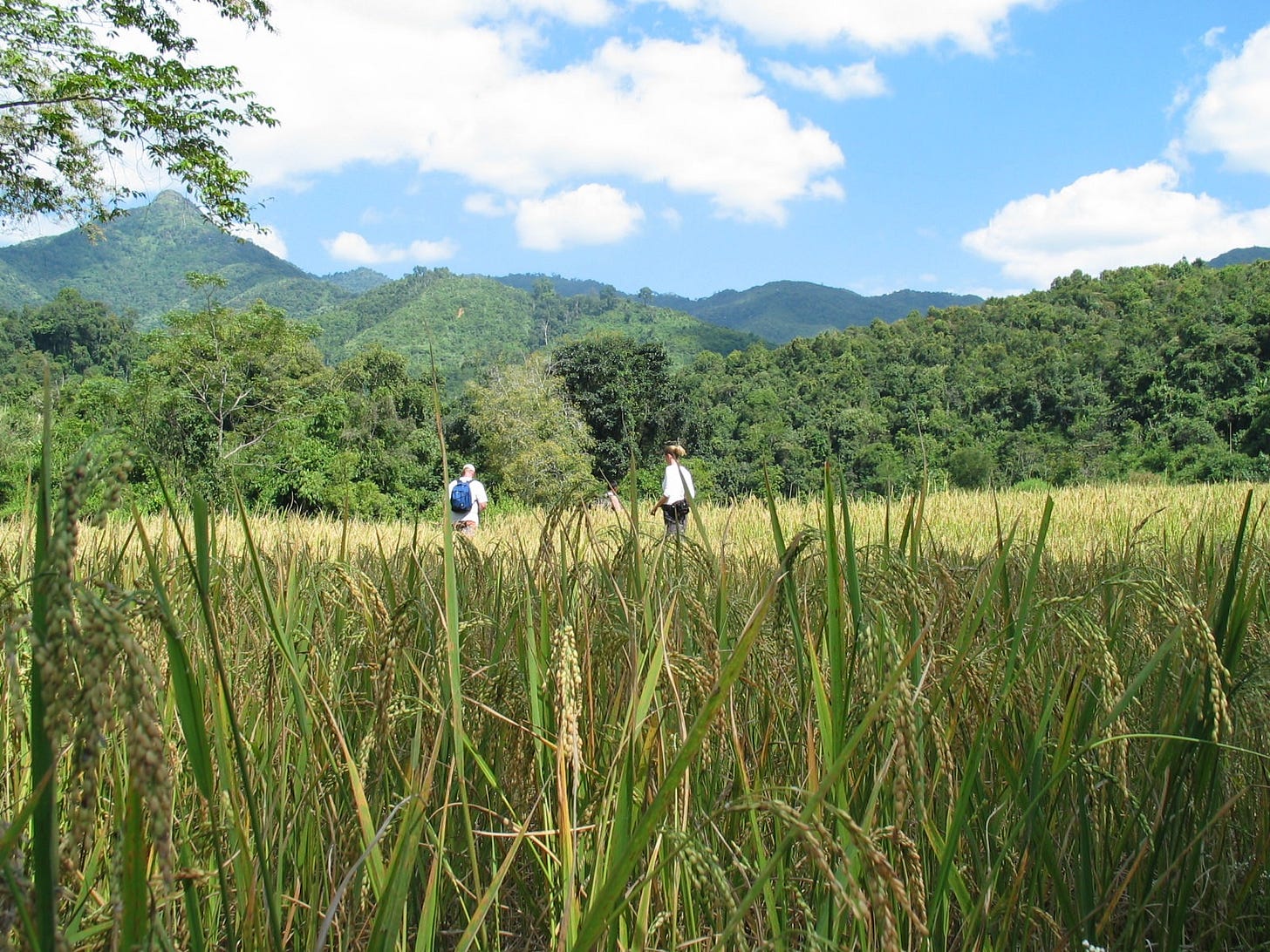
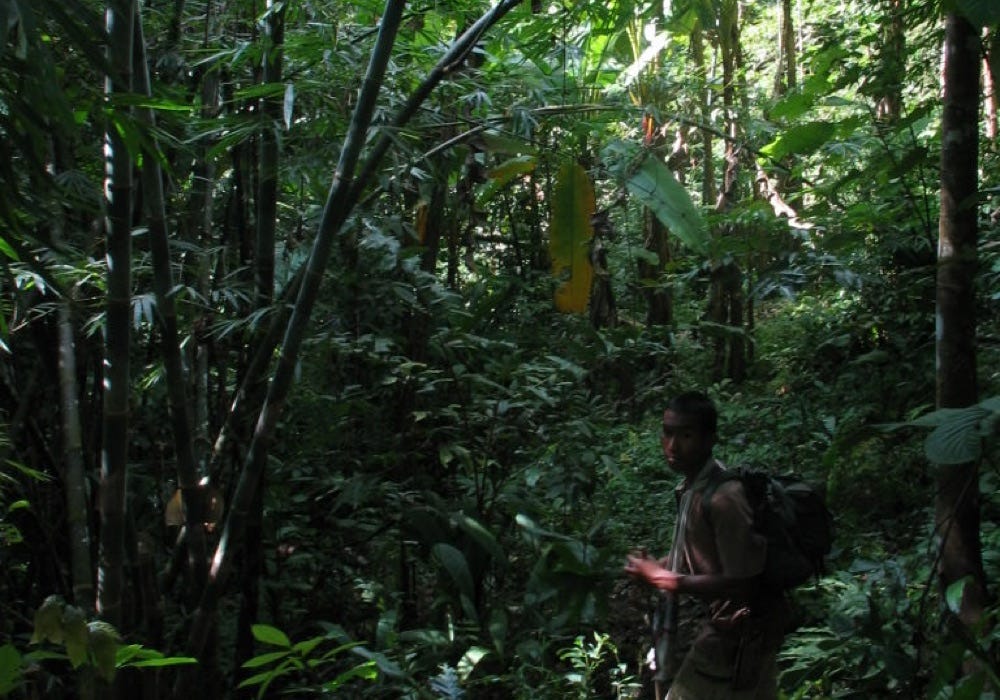
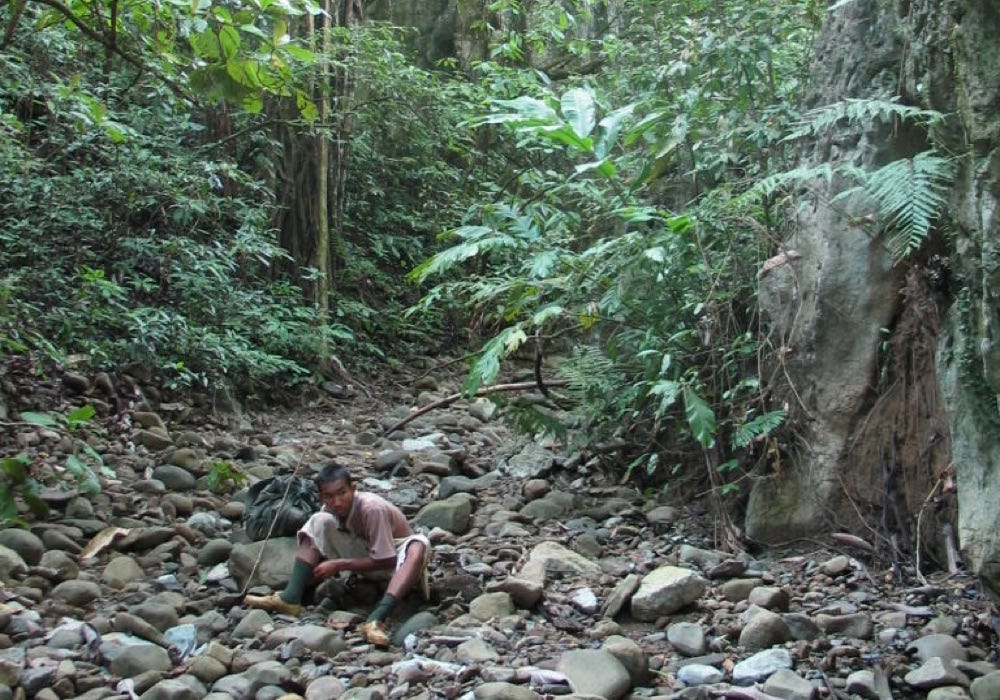
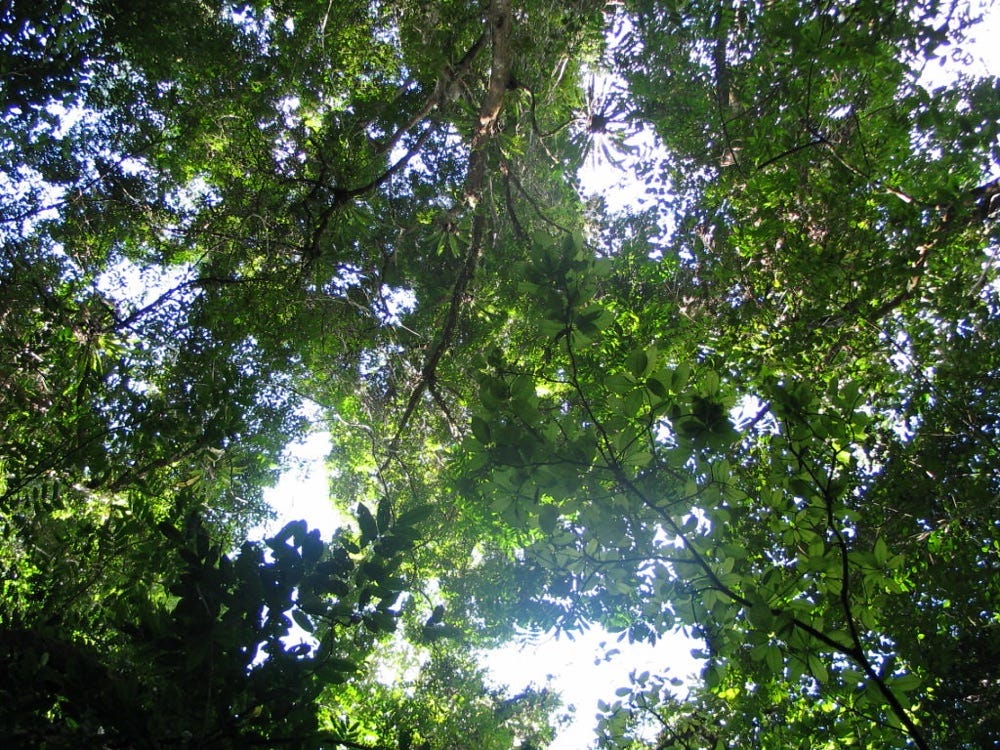
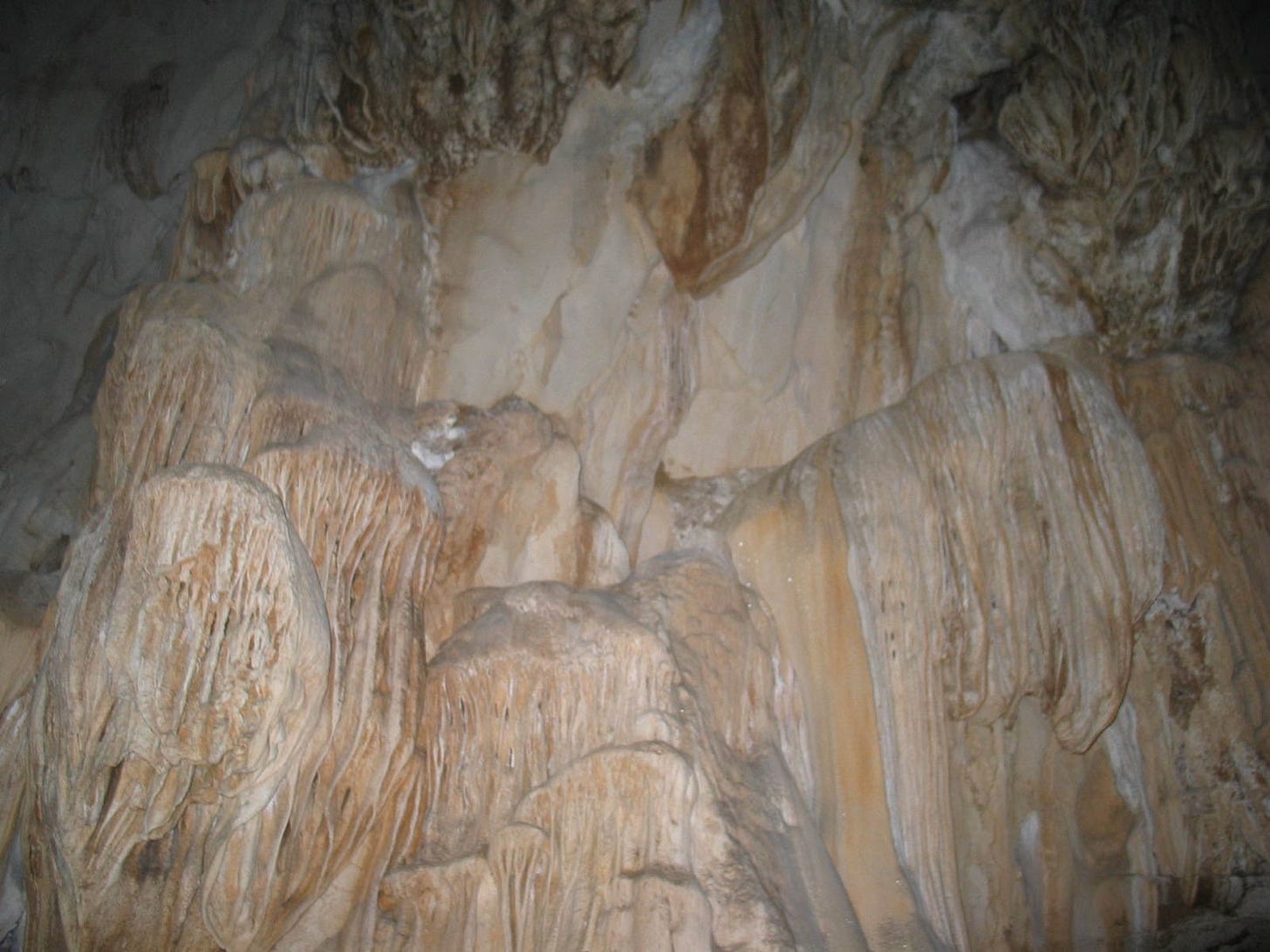

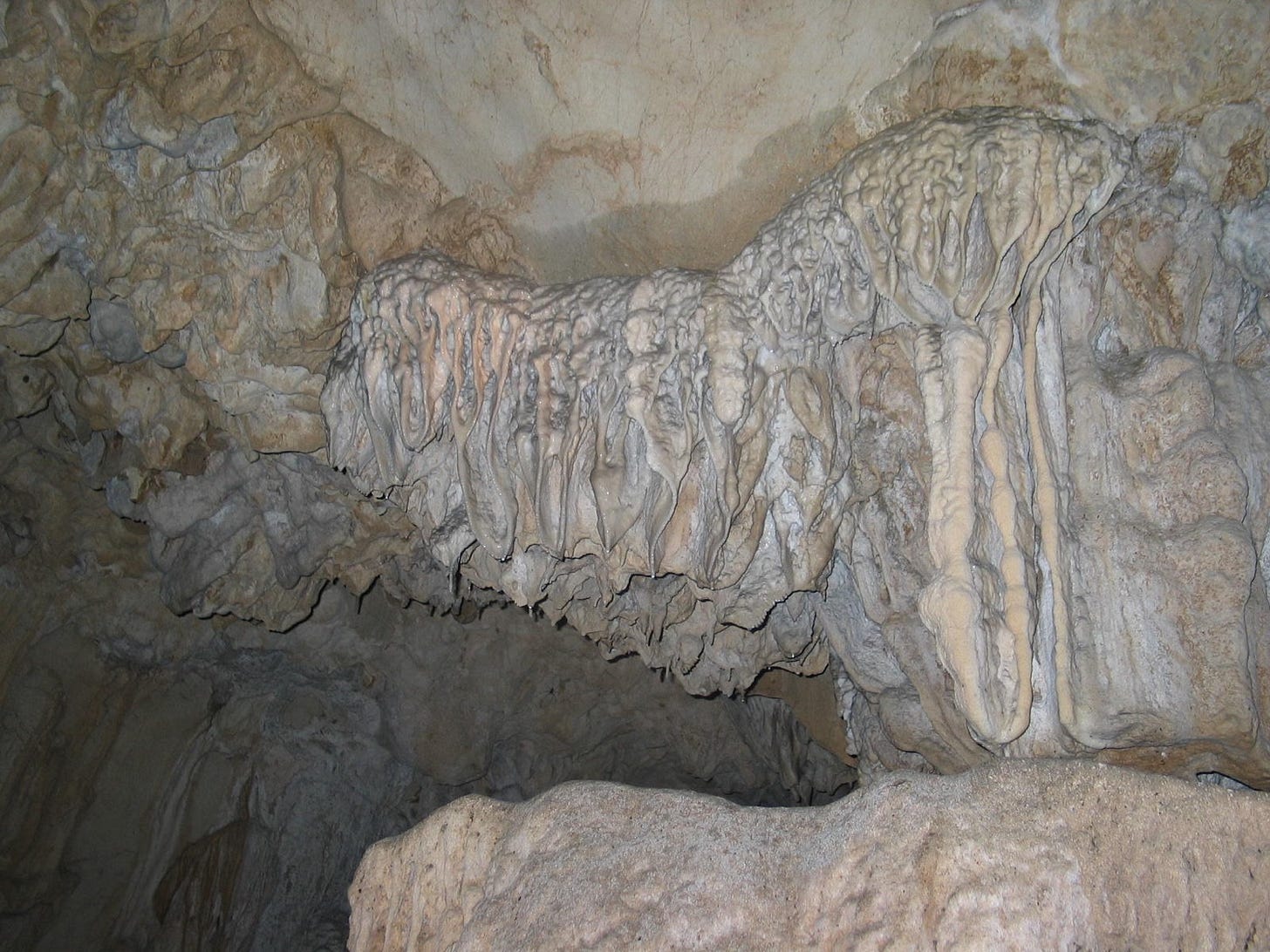
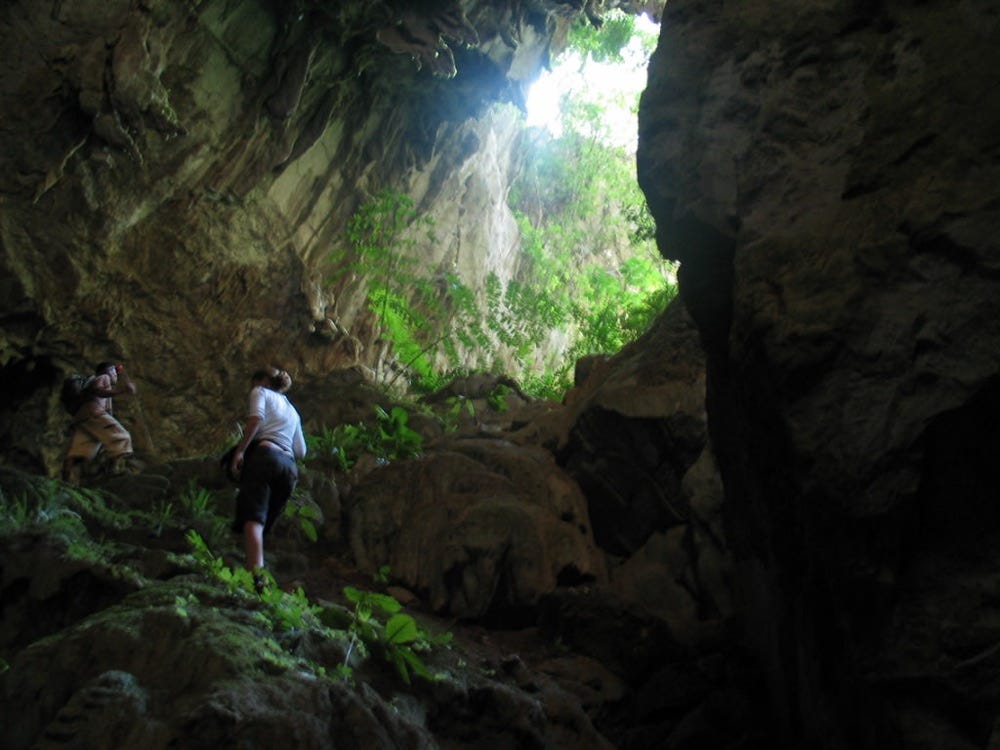
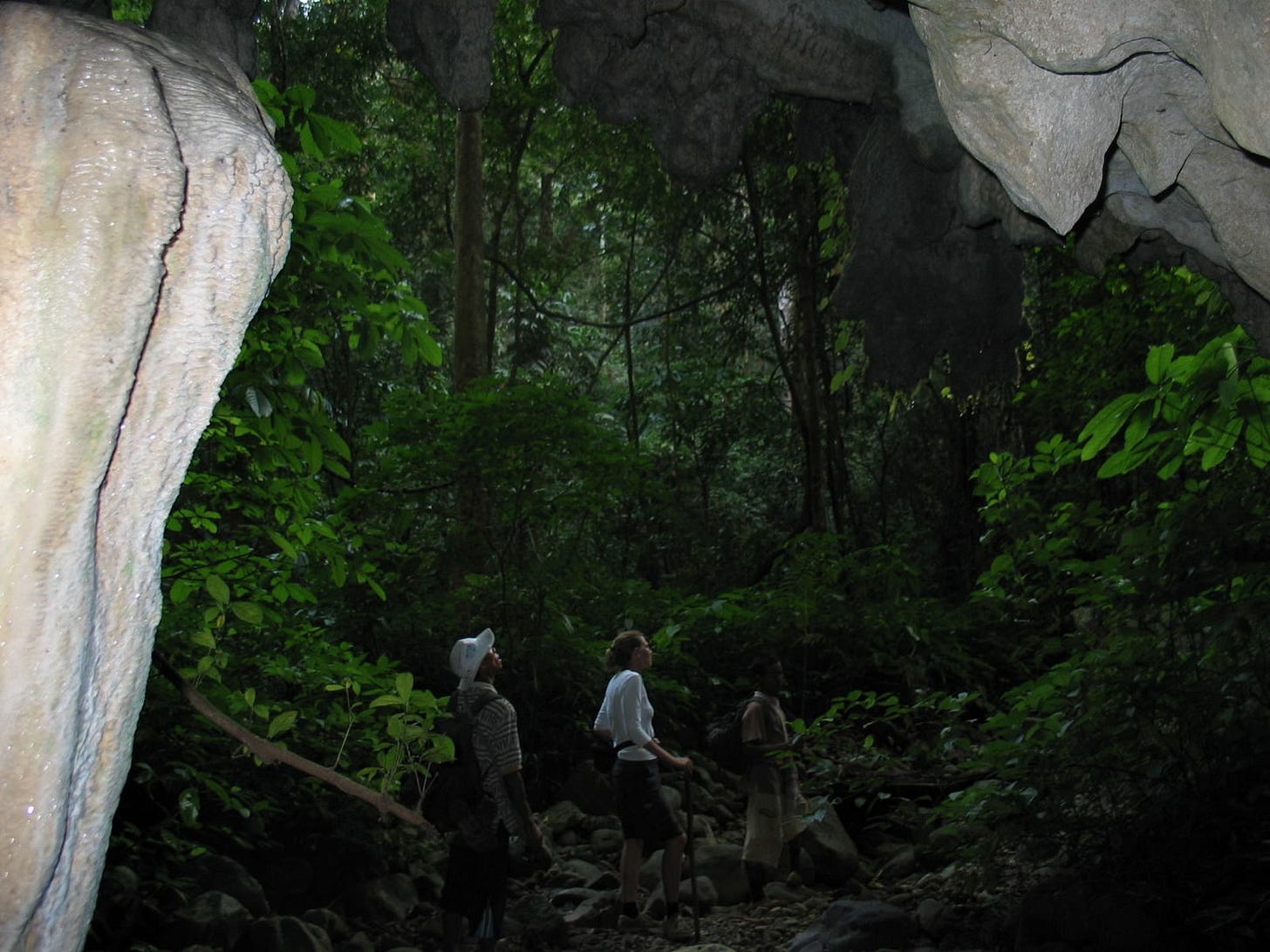









Share this post